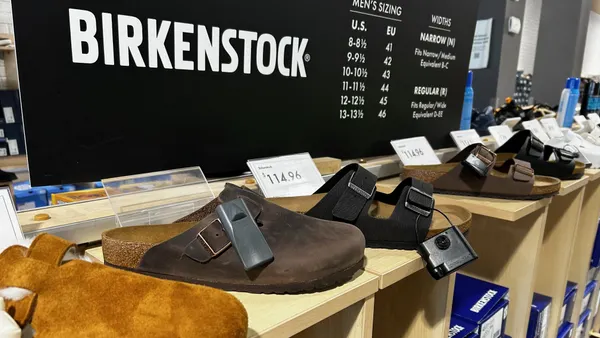Dive Brief:
-
Amazon is posting far fewer notices for job opportunities in hometown Seattle, according to the Seattle Times. Job postings in June numbered more than 9,000, but dropped to just 3,503 last week — the lowest in three years, according to the report.
-
The paper's number-crunching is backed up by The Conference Board, which between August and November this year counted the lowest number of Amazon job listings in Seattle's King County of any four-month period in data since June 2015, the Seattle Times also noted.
-
However, even the subdued numbers overshadow those at other business giants in the area: Amazon job listings surpass those of Microsoft, the University of Washington, Nordstrom and Starbucks combined, according to the report.
Dive Insight:
Amazon, which is deciding where in the U.S. to open a second headquarters, may have reached saturation for its operations in Seattle. The company told the Seattle Times that the downshift is part of the natural flow of doing business.
The factors vary, according to the Seattle Times' reporting, which uncovered a number of possible reasons, including divisions so big employees have begun to get in each other's way and cost-cutting directives from higher-ups that are curtailing travel.
The hiring that is taking place appears to be only tangentially related to the company's retail business. Most (60%) of current openings are in the company's lucrative Amazon Web Services cloud unit and for its Alexa voice assistant and related devices, which Amazon has been laser-focused on, the Seattle Times reports.
AWS in particular, along with its growing ad business, is a money-making behemoth widely seen as supporting Amazon's much less profitable retail enterprise. While retailers like Target and Walmart are on their toes responding to Amazon's wide-ranging and highly experimental retail plays, which have raised consumer expectations for assortment and fulfillment speed, they don't have the same non-retail operations to fall back on.
Last month, Morgan Stanley analyst Brian Newark broke down Amazon into its various businesses, giving each a value on its own, with retail at $600 billion, Amazon Web Services at $270 billion, Prime subscriptions at $70 billion and advertising at $55 billion — for a total of $995 billion. That means that Amazon is on pace to become one of the first-ever $1 trillion companies by the end of next year.
It's a sidelining of retail that is also evident in Apple's shift away from traditional store concepts, positioning its brick-and-mortar locations as community outposts rather than "stores." And the strategy calls into question Walmart's recent push to fuel its e-commerce sales through an acquisition spree that began with its purchase last year of newcomer Jet, which had yet to turn a profit, and continued into this year with the addition of the likes of Shoebuy, Moosejaw, Modcloth and Bonobos.
"You need to examine the Amazon model and then determine what part or parts of it you can participate in profitably," Nick Egelanian, president of retail development consultants SiteWorks International, told Retail Dive earlier this year, adding that Walmart's strategy may not be aiming for the best part. "Microsoft is second to Amazon in the cloud computing part of that business, so I suppose you can also make an argument that Walmart should be buying Microsoft."
If that were to happen, then Walmart would become one of Seattle's biggest employers, too.














